Do you ever have nightmares about storytime? I mean, literal, wake-up-in-the-middle-of-the-night-sweating nightmares? I do. Sometimes in my dream I have a huge group show up for storytime and no matter how much I try, I can’t make them hear me past the first row. (Which, if you’ve ever heard me in person, you know is a really silly thing for me to get stressed about, since my voice is really loud and years of marching band taught me how to breathe and project and usually the people in the front row want to be in the LAST row. Oh well.)
But most of the time when I have a storytime nightmare it’s this: I find myself in an unfamiliar library and I know I have storytime in a ridiculously short period of time, like, 3 minutes. And I’m running all over the place looking for the books I want to use and they’re not on the shelf and I don’t know where the flannelboard is or the supply room or even a chair to sit in and I just keep running and panicking until I wake up. Bleh.
Well, one time after one of those nightmares, I thought: I need a plan for a storytime that doesn’t need anything. Not one book, not one puppet, not one piece of felt. Then if I’m ever in a pinch, I can just sit down and launch into it, and wallah! No stress. So this idea has been kicking around for a long time (I think I remember talking to @sethers about it once a million years ago on Twitter) and I finally mapped it out. My rule was that it had to mimic a regular storytime experience as closely as possible, with all the bits and pieces and stories and songs and action stuff, rather than a storytelling experience, which is in my mind a completely different animal.
GOING PLACES STORYTIME
OPENING: Good Morning Song
[Long ago I adapted a Greg & Steve circle time song for storytime.]
Good morning, good morning, good morning to you
Good morning, good morning, good morning to you
It’s time for our stories, there’s so much to do
Good morning, good morning, good morning to you.
Are you ready to go on an adventure today? We’ve got lots of places to visit. But to get started, we’re going to have to cross a bridge. And have you ever heard what happened when the Billy Goats Gruff needed to cross a bridge?
STORY: Billy Goats Gruff
They made it across the bridge, didn’t they? What type of bridge do you think it was? Was it skinny? Long? Hmmm. Those are all good possibilities. Let’s see if we can be different kinds of bridges.
STRETCH: Bridges
Can you make a curve with your body? Put your feet on the floor and your hands in front of you. Now push your bottom in the air! [bear walk position] Good stretching! We’re being arch bridges now. What if we sit on our bottoms? Put your hands behind you and your feet in front of you…can you lift your bottom off the floor? [crab walk position] Now we’re suspension bridges! One more bridge…stand up and find a partner. Can you hold hands and raise them up? Now you’re a drawbridge…a drawbridge lifts up to let boats go underneath. Here I come, I’m a big boat…let go of your hands and lift them up so I can float by! Toot toot! Thank you! You were all super bridges. Why don’t we sit down and pretend to be boats now?
ACTION SONG: Row Row Row Your Boat
Let’s be rowboats. Rowboats have oars that you use to push the boat through the water. You sit and reach and pull and then sit and reach and pull again…like this! That’s it, good job. You guys know a song about a rowboat, so let’s sing it together.
Row row row your boat
Gently down the stream
Merrily merrily merrily merrily
Life is but a dream.
What if we’re on a really fast river? Can we row and sing quickly? [Sing again]
What if we’re on a really lazy river? Can we row and sing sloooooowly? [Sing again]
What did you see while we were rowing? Did you see any animals? I saw a bunch of cows eating the long grass on the riverbank. How about you? Oooh, lions? And dragons? Nice. Should we go looking for some other animals now? Why don’t we go on a bear hunt?
STORY: We’re Going On a Bear Hunt
Jump in bed and pull up the covers! We’re never going on a bear hunt again! … But wait a minute. There’s so many of us in this bed I’ll never get to sleep. Let’s roll over and see if we can make some room. Are you ready?
ACTION SONG: Roll Over
There were five in the bed and the little one said, “Roll over, roll over!”
So they all rolled over and ONE FELL OUT!
There were four in the bed…
There were three in the bed…
There were two in the bed…
There was one in the bed and the little one said, “Alone at last!”
Now I can get some sleep! Yawn! Everybody curl up and go to sleep…now yawn and stretch! Stretch your arms! Stretch your legs! It’s a beautiful day! I have another story about two friends who tried to visit each other on a beautiful day.
STORY: Mr Wiggle and Mr Waggle
[I learned this story first at a Pam Schiller workshop, but it’s also in “What’ll I Do With the Baby-O?” by Jane Cobb. It’s a great, simple story with easy actions for everyone to join in on. Mr Wiggle and Mr Waggle are your thumbs, and their houses are your fists.]
Mr Wiggle and Mr Waggle went walking up the hill and down the hill to visit each other, didn’t they? How else can we go visiting? Can we go in a car? Or a boat? Yes, sometimes in a plane. How about a train? Let’s make our fingers into a train.
FINGERPLAY: This Little Train
This little train runs up the track
It goes toot toot! And then runs back.
The other little train runs up the track
It goes toot toot! And then runs back.
[Run your pointer finger from your wrist to your shoulder, then when you say Toot toot! touch yourself on the nose. Repeat on the other side with the other finger & arm. Same nose probably though. 🙂 ]
Have you ever ridden on a train? There’s a fun train that goes up into the mountains and you can look at the trees and the roads while you ride. Have you ever ridden on a horse? Let’s sing a song about a lady who came through the mountains with six horses!
SONG: She’ll Be Comin’ Round the Mountain
She’ll be comin’ round the mountain when she comes
She’ll be comin’ round the mountain when she comes
She’ll be comin’ round the mountain
She’ll be comin’ round the mountain
She’ll be comin’ round the mountain when she comes
She’ll be driving six white horses when she comes…
What if she didn’t have horses? What if she rode in a racecar?
She’ll be driving in a racecar when she comes…
[Sing other verses…in a silver rocket…riding on a skateboard…]
CLOSING: The More We Get Together
The more we get together, together, together
The more we get together the happier we’ll be
For your friends are my friends and my friends are your friends
The more we get together the happier we’ll be.
Thanks everyone for coming to storytime today! Next time Miss Melissa will have all her stuff with her. Pinky swear.
Have you ever had a storytime nightmare?


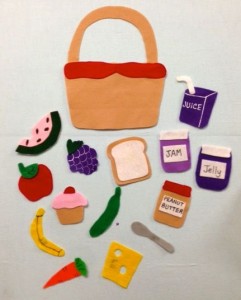

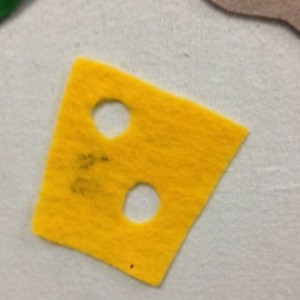
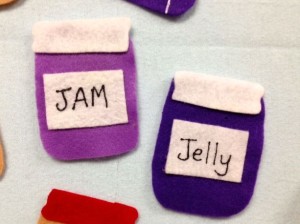

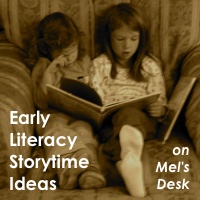

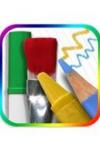
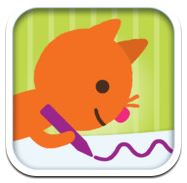

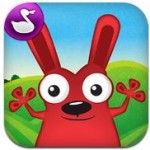
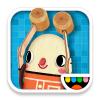
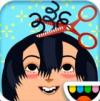

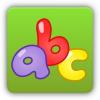
.jpg)
